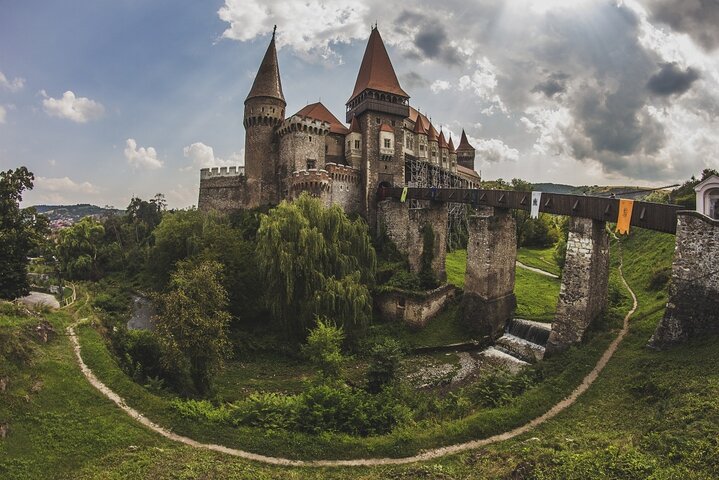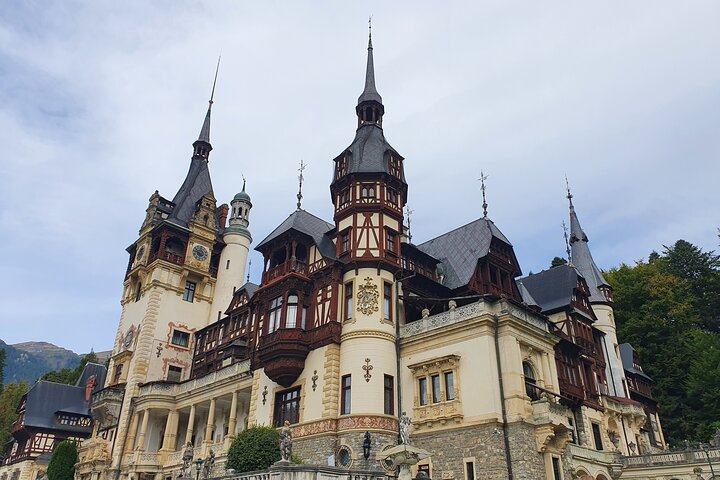Unveiling Legends: A Reflective Journey to Dracula’s Tomb and Mogosoaia Palace
In search of legends and self-discovery, I embarked on a journey to Snagov, exploring Dracula’s Tomb and the architectural marvel of Mogosoaia Palace. Guided by the insightful Marius, I delved into Romania’s rich history and traditions, finding reflections of my own journey in the stories of the past.
A Journey Through Time: The Enigma of Dracula’s Tomb
The morning air was crisp as I embarked on a journey that promised to unravel the mysteries of Count Vlad Dracula, a figure shrouded in both history and legend. My guide, Marius, was a man of profound knowledge, his passion for the tales of old Romania evident in every word he spoke. As we made our way to the Snagov Monastery, the final resting place of Vlad the Impaler, I found myself reflecting on the nature of legends and the truths they often conceal.
The monastery, perched on an island in the serene Snagov Lake, was a sight to behold. Its ancient walls seemed to whisper secrets of the past, tales of a time when Dracula’s name struck fear into the hearts of many. Standing before the tomb, I felt a strange connection to the past, a reminder of the impermanence of life and the stories we leave behind. Marius shared anecdotes that brought the history to life, painting a vivid picture of a man who was both feared and revered. It was a moment of introspection, a chance to ponder the duality of human nature and the legends that endure through time.
The Architectural Marvel of Mogosoaia Palace
Leaving the island, we journeyed to the Mogosoaia Palace, a testament to Romania’s rich architectural heritage. The palace, with its unique blend of Byzantine, Ottoman, and Neo-Romanian features, stood as a symbol of resilience and cultural identity. As I wandered through its grand halls, I couldn’t help but marvel at the intricate designs and the stories they told.
Marius, ever the insightful guide, explained the significance of each architectural element, weaving a narrative that connected the past with the present. The palace was more than just a building; it was a reflection of a nation’s history, a reminder of the strength and creativity that have defined Romania through centuries of change. As I stood in the shadow of its towering walls, I felt a sense of awe and admiration for the people who had crafted such beauty, a testament to the enduring spirit of a culture that has withstood the test of time.
A Taste of Tradition: The Village Museum
Our final stop was the Village Museum, a place where time seemed to stand still. Here, centuries-old peasant houses stood as guardians of tradition, each one a window into the lives of those who had come before. The museum was a celebration of Romanian rural heritage, a tribute to the simplicity and authenticity that define the country’s soul.
As I wandered through the village, I was struck by the sense of community and connection that permeated the air. Marius, with his usual flair for storytelling, shared tales of village life, of customs and traditions that have been passed down through generations. It was a poignant reminder of the importance of preserving our heritage, of the stories that shape our identity and connect us to our roots.
The day ended with a visit to a traditional eatery, where the flavors of Romania came alive in a feast of local delicacies. It was a fitting conclusion to a journey that had been as much about self-discovery as it was about exploring a new land. As I savored the rich tastes and reflected on the day’s experiences, I felt a renewed sense of connection to the world around me, a reminder of the beauty and complexity of the human experience.

















































